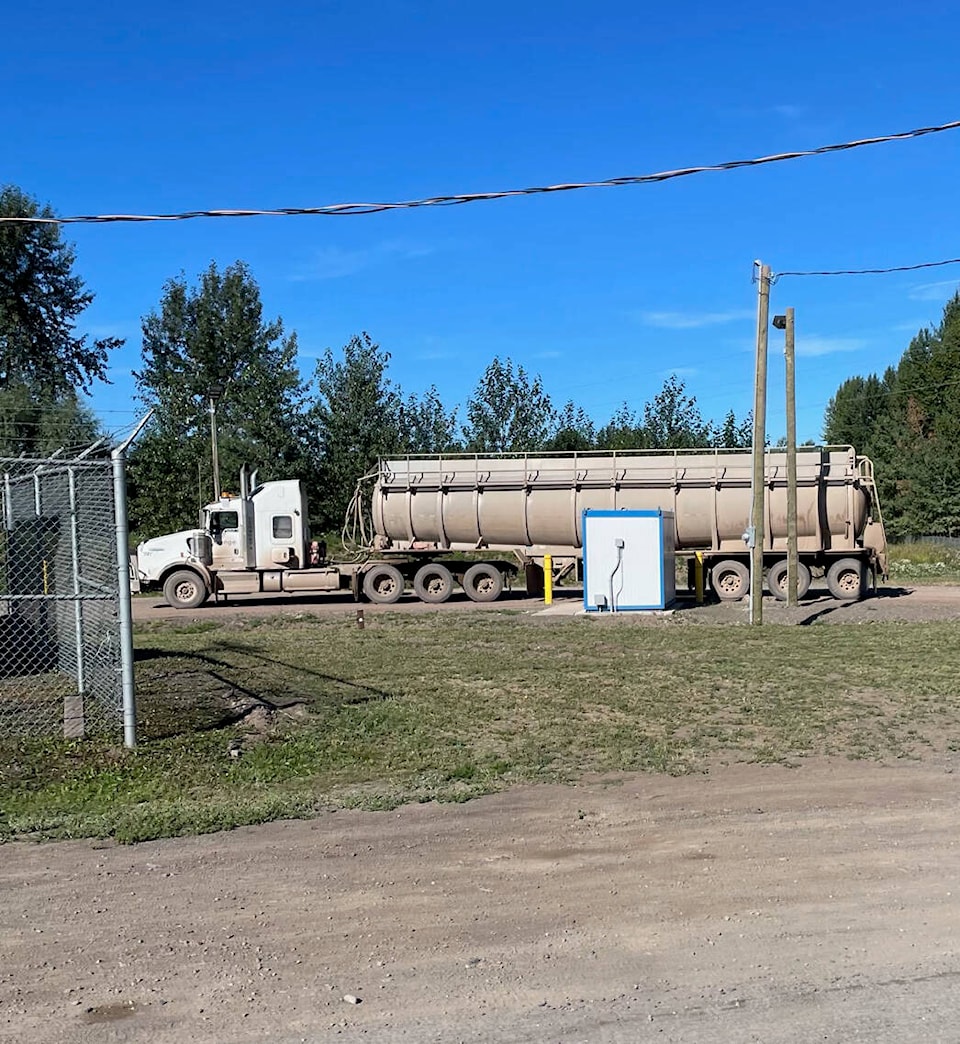Coastal GasLink says it is working on a plan to have its camp contractor find a way to avoid having businesses affected when the contents of sewage-carrying tankers are pumped out at a District of Houston facility in the industrial area of North Nadina Ave.
Smells when the pumping occurs now waft through the area, creating an unpleasant atmosphere for employees and business clients.
Coastal GasLink official Kiel Giddens says the company is speaking with its camp contractor about two possibilities — one being to pump after 8 p.m. when businesses are closed and to further treat the effluent to reduce the smell at the camp locations prior to being trucked into town.
“The treatment would be different than now,” he said.
Coastal GasLink has three camps south of Houston as part of the accommodation needed for workers constructing a 670-kilometre pipeline which will carry natural gas from northeastern B.C. to the LNG Canada liquefied natural gas plant now under construction in Kitimat.
The largest, Huckleberry, has an 800-person capacity, while the 9A Lodge can hold 150 people and the P2 Lodge can hold 450 people.
Giddens said the sewage smell situation is unintentional and that Coastal GasLink is committed to finding a solution.
He said Coastal GasLink at one time thought it would have to install purpose-built sewage disposal systems at the camps but was encouraged to work with municipalities to see if their own facilities could be used, thus providing a source of revenue.
In the case of Houston, that meant workplace provider Civeo providing the District with a substantial cheque to help replace a much smaller dumping station with a much larger one able to handle the outflow from large industrial customers. Civeo also pays a user fee.
“The previous one just wasn’t adequate,” said Giddens of its design and size meant for tourist RVs and trailers and local domestic users.
Financial arrangements were also made with other municipalities to use their facilities.
In those situations, dumping facility locations could very well be away from businesses and people so that any resulting smells would not pose a problem, Giddens added.
He also gave assurances that Coastal GasLink did, with the District of Houston, determine that the District’s lagoon could well handle the effluent from the work camps.
“We would not want to impact a system,” Giddens said.
Coastal GasLink also has a large camp along Hwy. 16 east of Fraser Lake and its effluent is pumped into the Fraser Lake municipal system.
“They were worried during the spring freshet so we found another location but when it was over, they called and said they wanted us back,” Giddens said.
